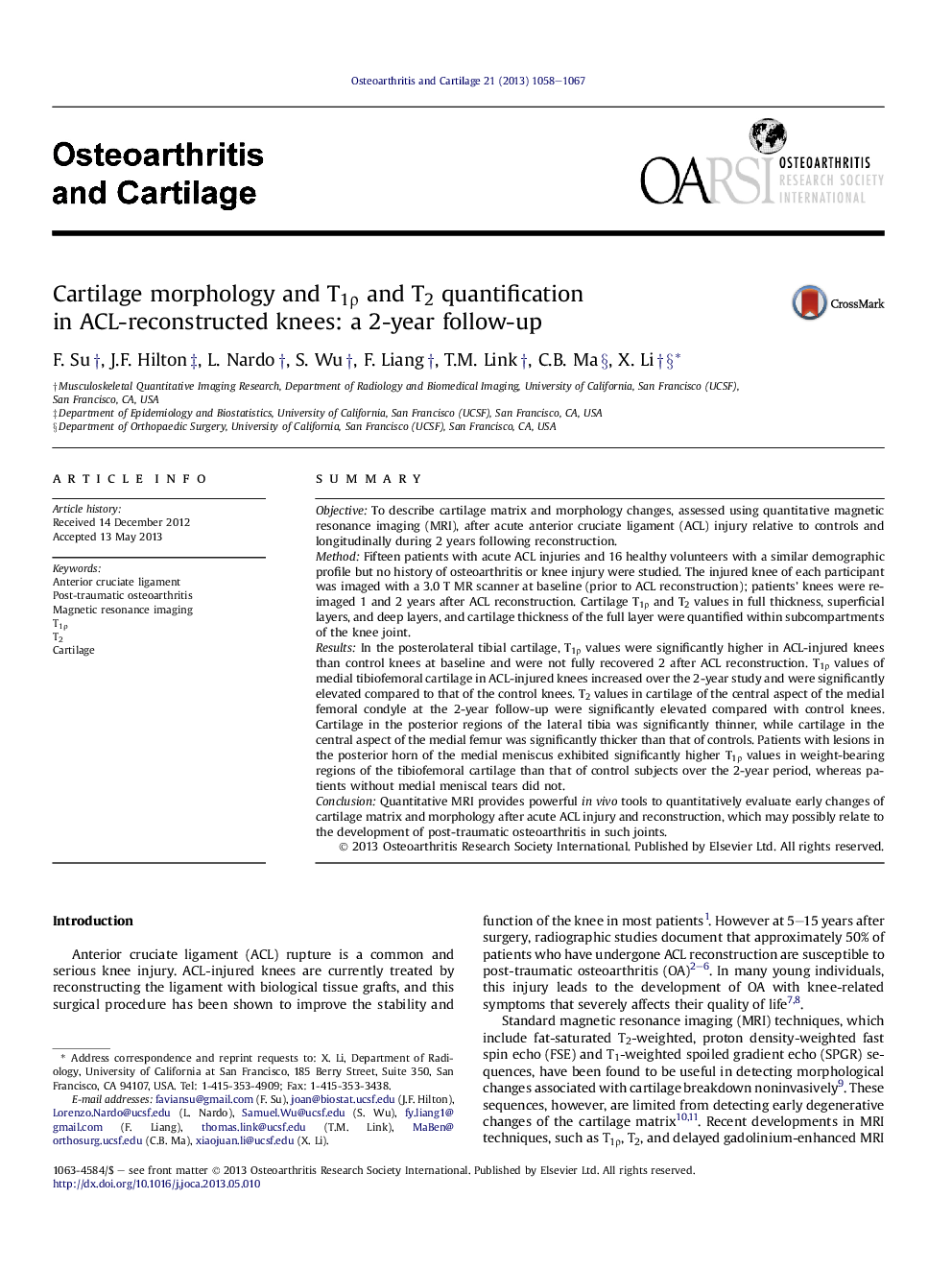| Article ID | Journal | Published Year | Pages | File Type |
|---|---|---|---|---|
| 3379582 | Osteoarthritis and Cartilage | 2013 | 10 Pages |
SummaryObjectiveTo describe cartilage matrix and morphology changes, assessed using quantitative magnetic resonance imaging (MRI), after acute anterior cruciate ligament (ACL) injury relative to controls and longitudinally during 2 years following reconstruction.MethodFifteen patients with acute ACL injuries and 16 healthy volunteers with a similar demographic profile but no history of osteoarthritis or knee injury were studied. The injured knee of each participant was imaged with a 3.0 T MR scanner at baseline (prior to ACL reconstruction); patients' knees were re-imaged 1 and 2 years after ACL reconstruction. Cartilage T1ρ and T2 values in full thickness, superficial layers, and deep layers, and cartilage thickness of the full layer were quantified within subcompartments of the knee joint.ResultsIn the posterolateral tibial cartilage, T1ρ values were significantly higher in ACL-injured knees than control knees at baseline and were not fully recovered 2 after ACL reconstruction. T1ρ values of medial tibiofemoral cartilage in ACL-injured knees increased over the 2-year study and were significantly elevated compared to that of the control knees. T2 values in cartilage of the central aspect of the medial femoral condyle at the 2-year follow-up were significantly elevated compared with control knees. Cartilage in the posterior regions of the lateral tibia was significantly thinner, while cartilage in the central aspect of the medial femur was significantly thicker than that of controls. Patients with lesions in the posterior horn of the medial meniscus exhibited significantly higher T1ρ values in weight-bearing regions of the tibiofemoral cartilage than that of control subjects over the 2-year period, whereas patients without medial meniscal tears did not.ConclusionQuantitative MRI provides powerful in vivo tools to quantitatively evaluate early changes of cartilage matrix and morphology after acute ACL injury and reconstruction, which may possibly relate to the development of post-traumatic osteoarthritis in such joints.
